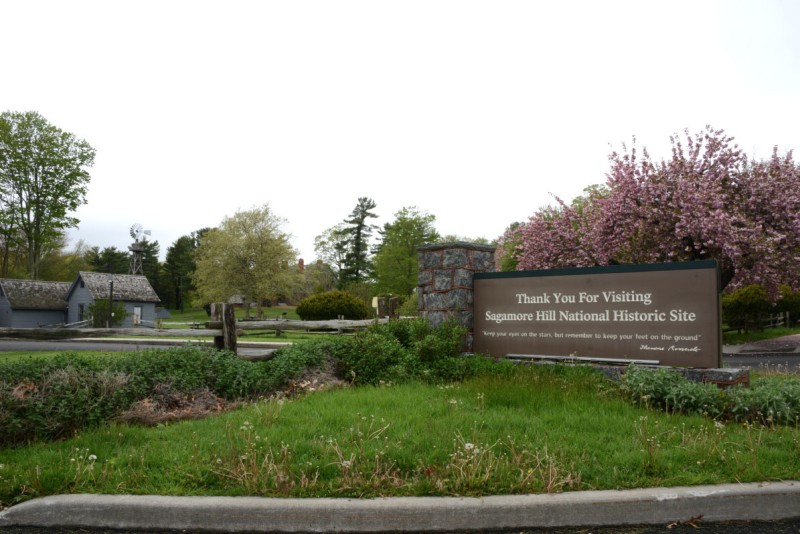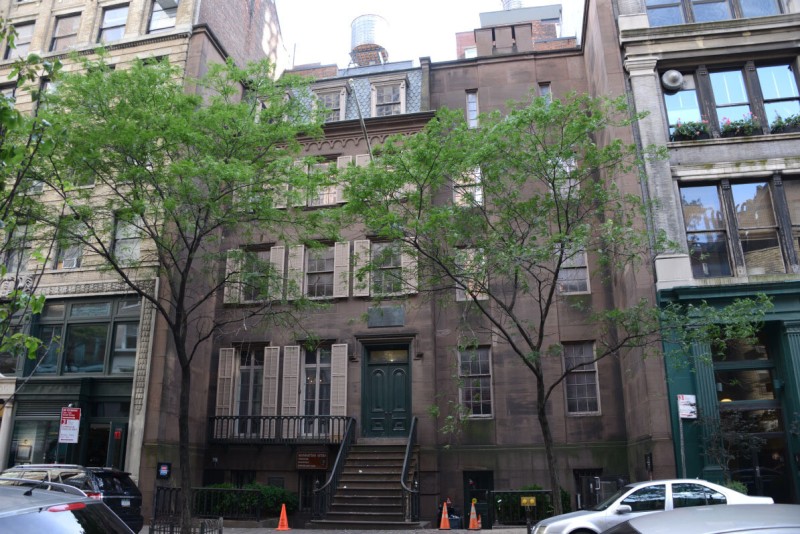
Theodore Roosevelt was born at 28 East 20th Street in Manhattan in 1858, in a house very similar to this one, which is a replica.

The house was originally built in 1848 by his grandfather, Cornelius Roosevelt, who was one of the wealthiest people in the city at that time. He built two adjacent brownstones here as wedding presents for his sons (Theodore’s father and uncle).
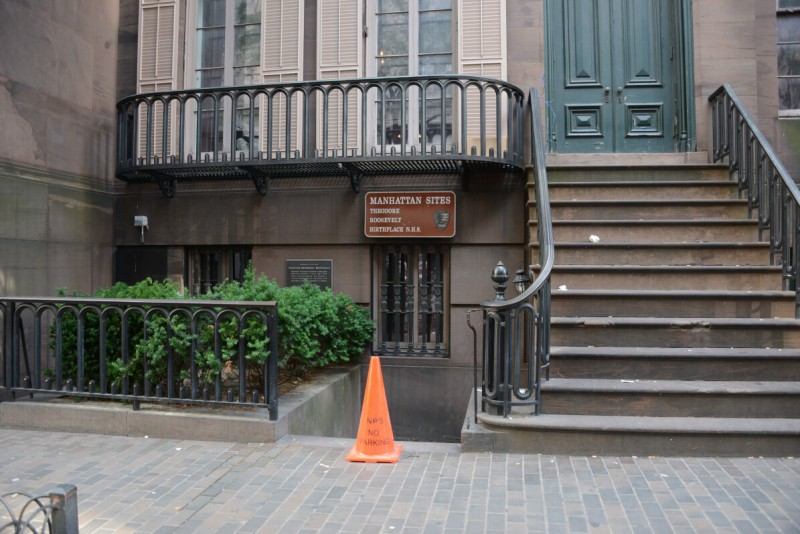
He lived here until he was 14, when the family went on a world tour, then moved into a new apartment at 6 West 57th Street. His birthplace, 28 East 20th, stayed in the family until 1896.

A group of notable businessmen, including Frick, Guggenheim, and Thomas Edison, got together to preserve the building as early as 1904, but the group became mired in controversy over the misappropriation of funds, and eventually disbanded.
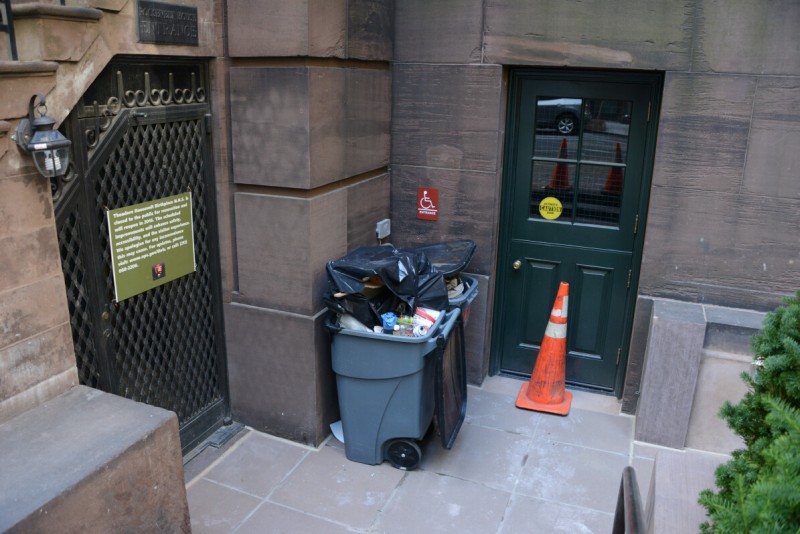
Commercial uses took over the building and transformed it, then in 1916 it was completely demolished and a two-story cafe was built on the site.

In 1919, The Women’s Roosevelt Memorial Association purchased the site, and demolished the existing building. They built a replica of the original home, and a museum and galleries on the adjoining lot.
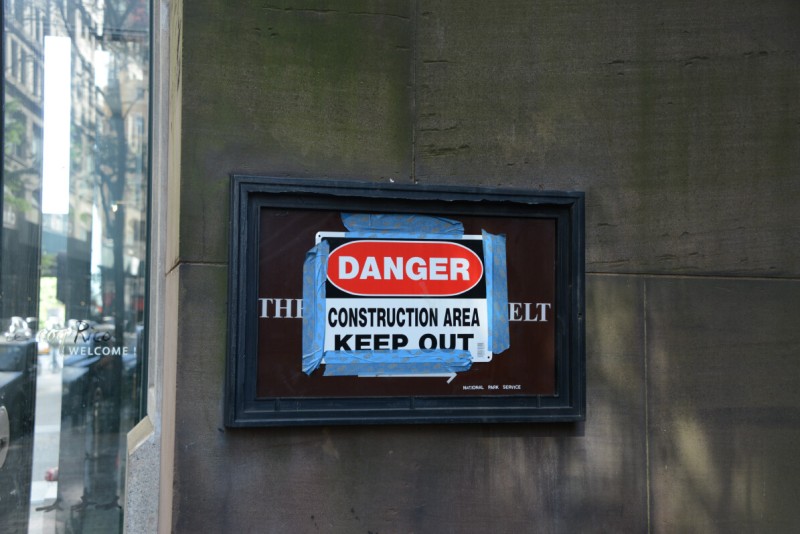
Opened to the public in 1923, it was dedicated on what would have been Roosevelt’s 65th birthday. The building was donated to the National Park Service in 1963. In 2015 a $3.7 million renovation and accessibility upgrade commenced that closed the site for more than a year.
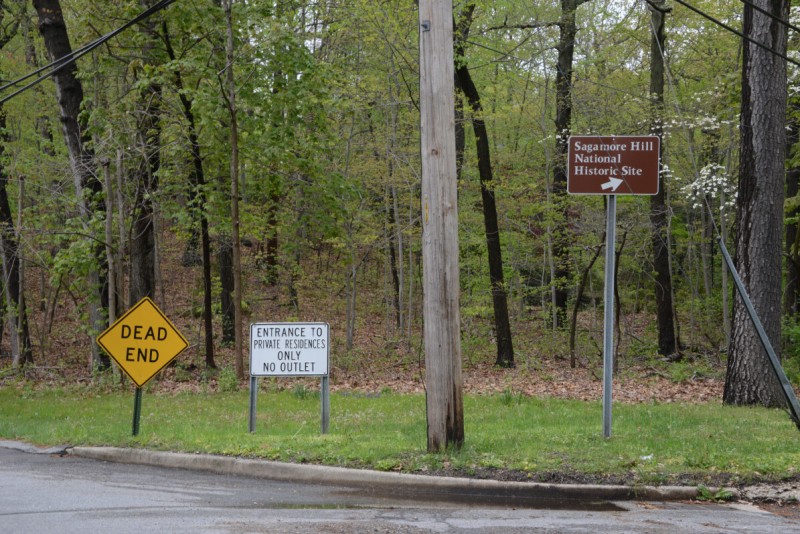
As a child growing up in the city, Theodore Roosevelt would often visit his family at their summer homes in Oyster Bay, on the north shore of Long Island, not far from New York City. In 1880 he bought land there, between lots owned by his uncles and cousins, on a hill overlooking the water.
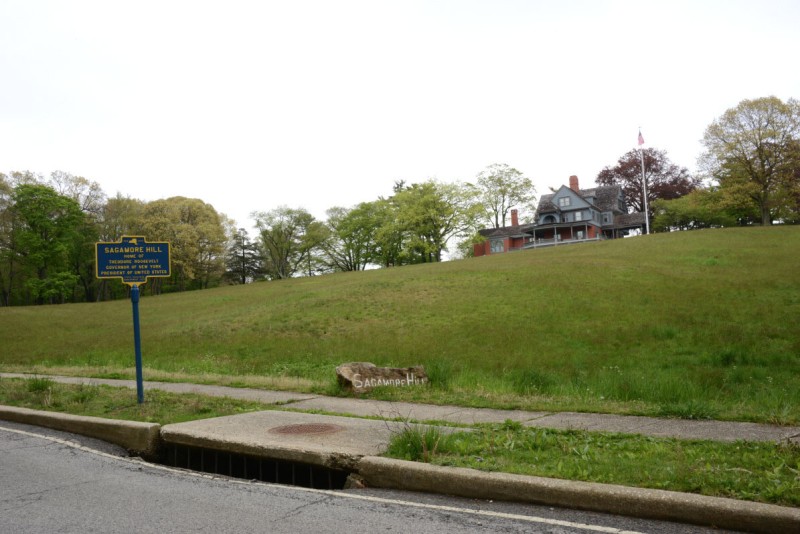
The home he would live in for most of his life would be here, in the fashionable countryside community of Oyster Bay. He named it Sagamore Hill, after an Indian chief whose tribes once lived there.

He began designing his dream home with his wife, but she died in 1884. He went ahead with the plans for the house, and after he remarried in 1887, raised six children there.
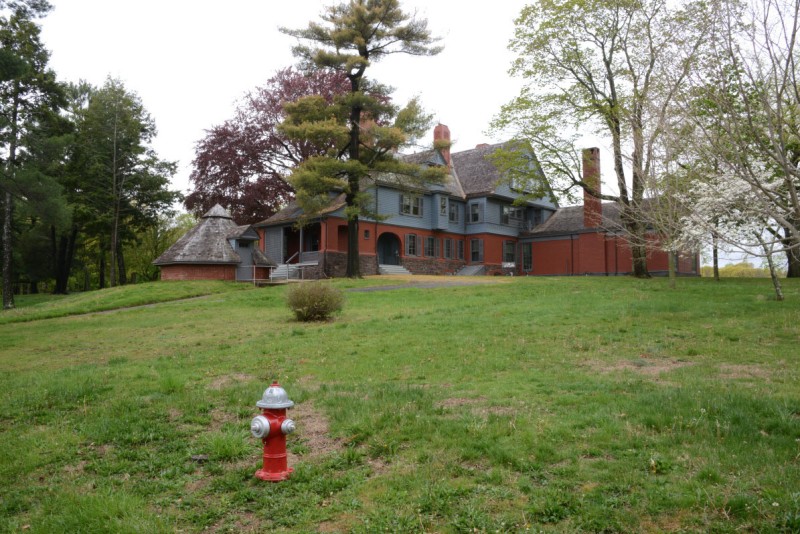
Roosevelt lived here when he was nominated for governor in 1898, and vice president in 1900. When McKinley was assassinated in 1901, Roosevelt became president, coming home whenever he could. After his presidency he lived at Sagamore Hill until his death in 1919, at the age of 60.

It’s a rambling 23 room Queen Anne-style mansion, heavy with wood inside and out, stuffed with taxidermy, and surrounded by lawns. He had the railing on the main porch removed, to more directly address crowds of press and other groups that would come to hear his addresses and announcements.

Sagamore Hill was supported by a working farm on its 155 acres, providing vegetables, meat, and dairy. There was also a household staff, including a valet, nurse, governess, maids, and cooks.
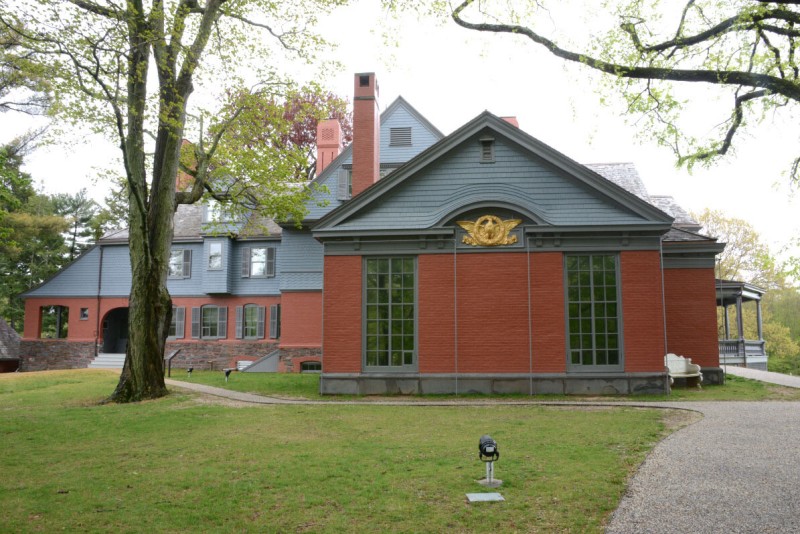
After Roosevelt died, his wife Edith continued to live at Sagamore Hill until she died in 1948. It was acquired by the Theodore Roosevelt Association in 1950, along with family furnishings, and the house was opened to the public in 1953. It was donated to the National Park Service in 1963, along with his birthplace home in the city, which was by then owned by the same preservation organization.
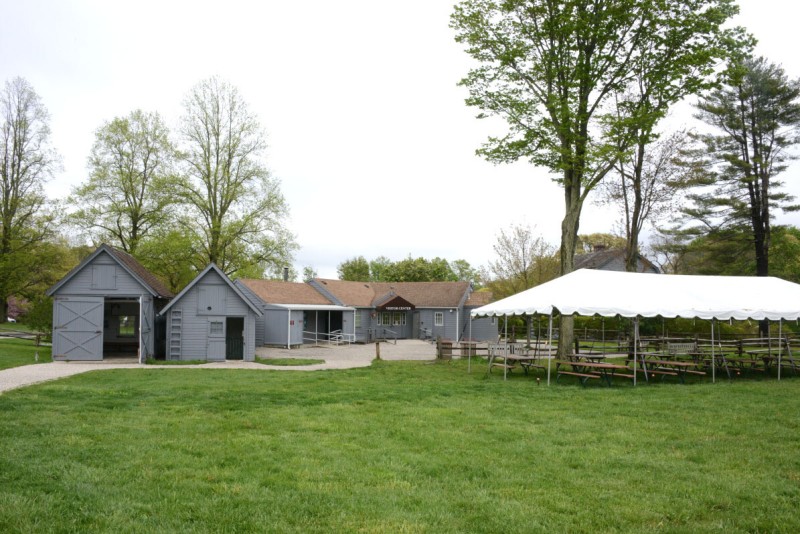
The site reopened in 2015, after a $10 million restoration that took more than three years. There is a visitor center, and admission is charged.

A large brick house on the edge of the property, once occupied by his son, is now the Old Orchard Museum, which contains displays about Roosevelt.
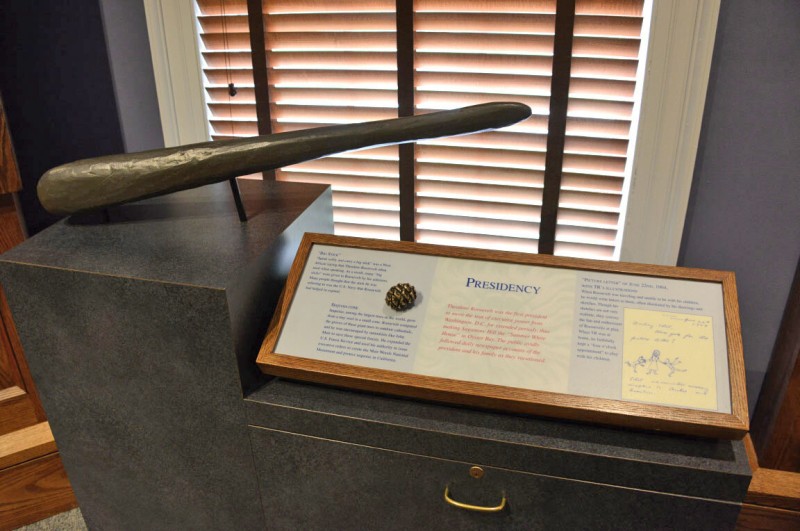
Speak softly and carry a big stick is a saying that originated in West Africa, but was often repeated by Roosevelt, and people sent him lots of big sticks as a result.
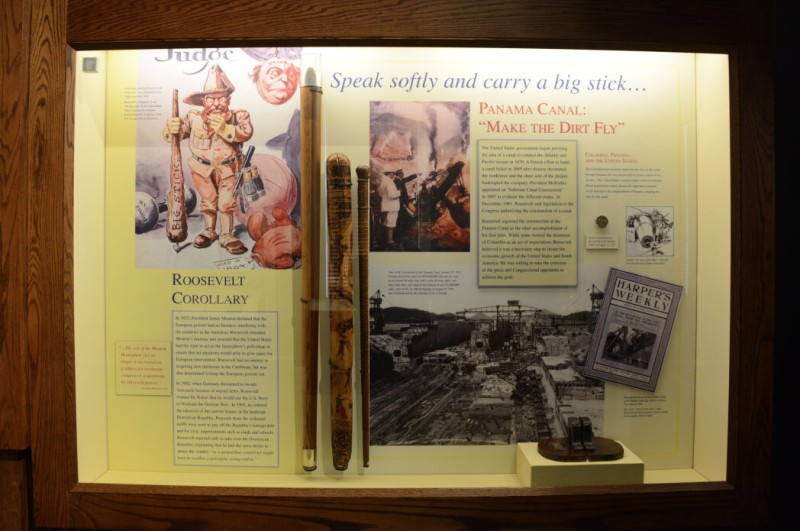
Roosevelt is known for opening up the west, and changing the globe by building the Panama Canal. He also expanded federal control of western lands, primarily by expanding national forests.
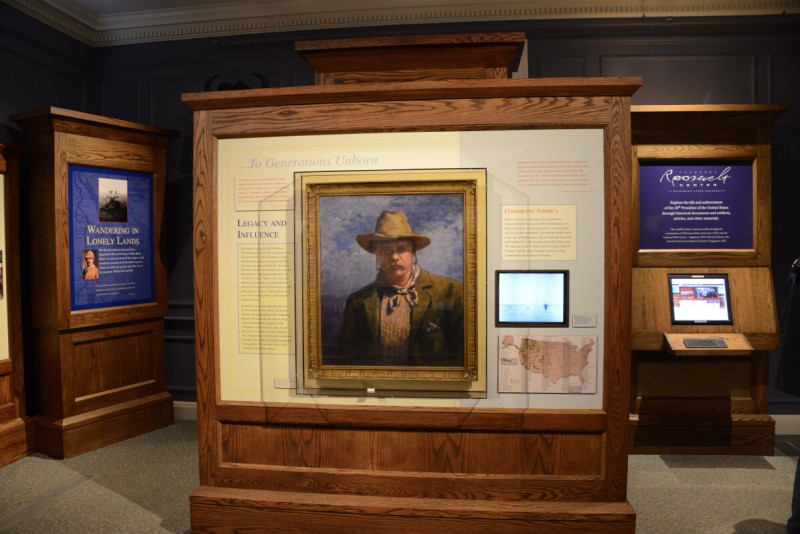
As a young man, after his wife and mother died tragically on the same day in 1884, he left for North Dakota, where he invested in cattle ranches. Roosevelt stayed there for a few years, going back and forth from New York. His time in the Dakotas as a big game hunter helped him become a preservationist.

Roosevelt is one of the four presidents carved for posterity on a mountain in South Dakota (Mount Rushmore).
